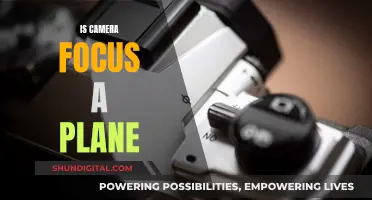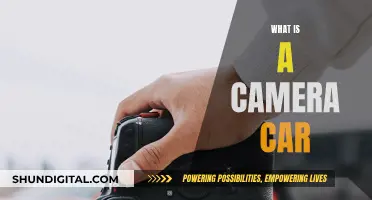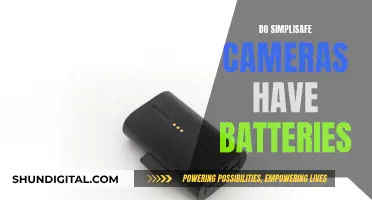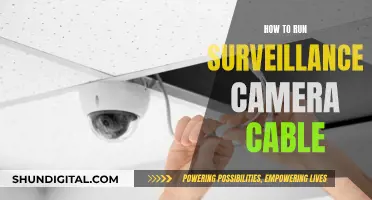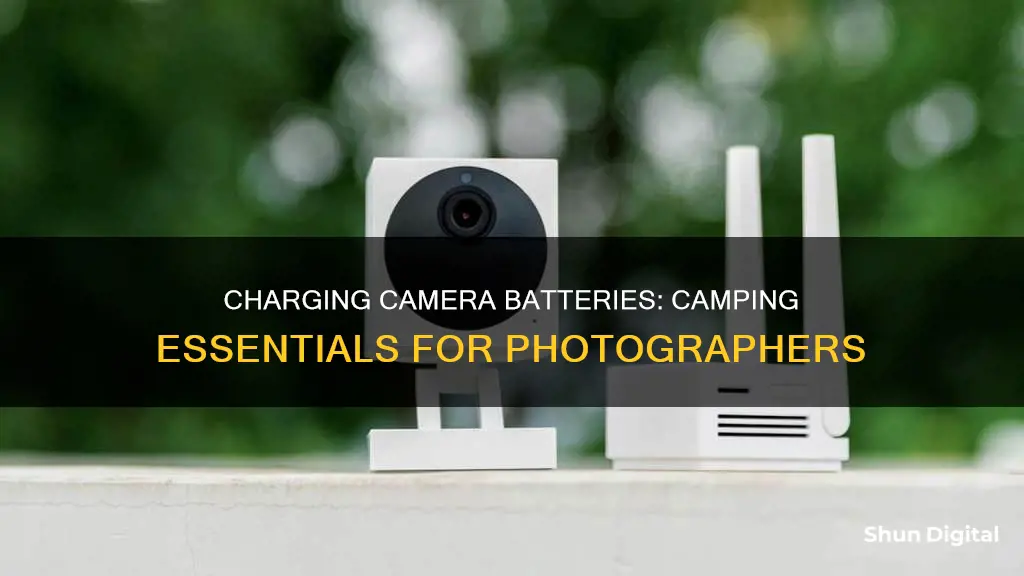
Capturing memories is important when you're out camping, and there's no better way to do it than with a good camera in hand. But what happens when your camera battery runs out? If you're camping in a remote location without access to electricity, there are a few options to consider.
Firstly, you could bring extra batteries. This is a cheap and easy solution, but it can be heavy to carry a lot of extra batteries, and they might not be useful for recharging other devices like your phone.
Another option is to bring a portable power bank. Power banks come in various capacities and can charge multiple devices via USB, but they might not provide enough power for longer trips or high-power devices like camera gear.
If you have a car with you, you could use a power inverter to run your camera charger directly from the car battery. However, this method may not be possible with all cars, and it can be inconvenient to keep returning to your car to charge devices.
For longer trips or high-power needs, a combination of a power station and solar panel is a reliable solution. Solar panels can be used to directly charge devices or recharge a power bank or power station, but they are slow and unreliable in variable weather conditions.
Finally, you could invest in a high-quality, long-lasting battery for your camera and use it sparingly, only turning it on when you need to take a photo.
With a bit of planning and preparation, you can ensure your camera battery doesn't die in the middle of your camping trip!

Bring extra batteries
Bringing extra batteries is a simple and practical solution to charging your camera while camping. This option is best for short camping trips where you won't be using your phone heavily. It is the cheapest and easiest solution, as you can simply buy as many batteries as you think you'll need. If all your devices use the same type of battery, even better—you'll only have to bring one type.
However, there are some downsides to this approach. You won't be able to recharge your devices with spare batteries, and if you rely on your phone for navigation, this could be risky. Additionally, purchasing extra batteries that you may not use again for a long time can be costly.
If you're planning a longer camping trip or have high power needs, you may want to consider other options, such as a power bank, power station, or solar panel setup. Power banks are portable chargers that typically have USB ports, while power stations are like power banks but with larger capacities and various outlets. Solar panels can be used to directly charge your devices or recharge a power bank or power station.
When deciding how to keep your camera charged while camping, consider the length of your trip, your power needs, and your budget. Bringing extra batteries can be a great solution for short trips, but for longer trips or high power needs, you may need to explore other options.
Monthly Fees for Cellular Cameras: What's the Deal?
You may want to see also

Use a power bank
Using a power bank is a great way to charge your camera battery while camping. This method is simple and practical, and suitable for most campers and photographers. Power banks are portable chargers that typically feature USB ports, allowing you to plug in your camera and other devices for charging. They come in various capacities, so it's important to choose one that meets your power needs. Calculate how much power your devices use and how many times you'll need to recharge them to determine the right capacity.
Most DSLRs and mirrorless cameras can be charged via a USB connection, making power banks an ideal solution. You can connect your camera directly to the power bank using a USB cable, ensuring your camera stays charged while you're hiking or relaxing at camp. Additionally, some high-capacity power banks with multiple output ports can power your entire photography setup, including cameras, monitors, and LED lights.
If you're going on a longer camping trip or have high-power devices like photo gear, consider investing in a high-capacity power bank. These power banks provide more charging power and can be essential for keeping your camera charged throughout your trip. You can also consider pairing your power bank with a small solar panel for recharging, ensuring you have a reliable source of power during your camping adventures.
When choosing a power bank, opt for a lightweight option if you're backpacking or minimalist camping. This will help reduce the overall weight of your gear. Keep in mind that power banks might not provide enough power for longer trips or high-power devices, so plan accordingly.
By following these tips and choosing the right power bank, you can ensure that your camera battery stays charged while camping, allowing you to capture all the beautiful moments of your outdoor adventures.
Charging Camera Pens: A Quick Guide to Powering Up Discreetly
You may want to see also

Use a power station
If you're going camping and are concerned about your camera battery dying, one option is to bring a power station. Power stations are like a power bank on steroids. They have huge capacities and various outlets, so you can charge multiple devices at once. This is a good option if you have high power needs, are car camping, or glamping.
You can charge a power station at home, and then you have a reliable source of power on your camping trip. They are also useful to have at home in case of a power outage, so they are a worthwhile investment. For example, the Bluetti EB70 power station is a good option.
However, power stations are heavy, expensive, and don't handle extreme heat well. You risk ruining a power station if you leave it in a hot vehicle while on day trips or hiking. They also can't run large devices like heaters. Even high-capacity power stations usually can't power devices that require an electric hookup.
If you're going camping with your vehicle, you can also charge your camera battery by powering the power station from your car battery. To do this, you'll need a compatible USB cable. However, this method has its drawbacks: you can't take the power station with you if you want to go deeper into the woods on a hiking trip, and if the voltage and current of your car battery power output are not suitable, your camera could be damaged in the charging process.
If you're concerned about your camera battery dying while camping, a power station is a good option to ensure you have a reliable source of power. However, they are heavy and expensive, so you'll need to weigh the benefits against the drawbacks to decide if a power station is the best choice for your camping trip.
Wireless Cameras: Charging Methods and Innovations
You may want to see also

Solar power
Using solar panels to charge your camera battery is simple. You can connect your camera directly to the solar panels using a USB charging cable. However, solar panels can be unreliable as they depend on the sun for power. If the sun isn't shining, or if the weather is bad, you won't be able to charge your devices. Solar panels are also relatively slow to charge devices, and they can be bulky to carry around.
If you're planning on using solar panels, it's a good idea to pair them with a power bank or power station. Power banks are lightweight and can be used to charge multiple devices simultaneously. They are perfect for backpackers and minimalist campers. However, they might not provide enough power for longer trips or high-power devices like photo gear. On the other hand, power stations have huge capacities and various outlets, but they are heavy and expensive.
When choosing solar panels, you can opt for ultralight panels for backpacking or larger panels for car camping trips. Solar panels are rated in watts (W), which indicates the flow of electricity during peak sunlight. A higher wattage means more electricity is generated. For example, a 100W solar panel can generate 80W per hour in reality and can absorb peak sunlight energy for about 4 hours a day.
To maximise the charging capacity of solar panels, you can combine them with a battery pack. This allows you to quickly charge the battery during peak sunlight and then use the stored energy during the night or when sunlight is low. Batteries are rated in watt-hours (Wh), which indicates the amount of energy stored. By pairing a solar panel with a battery pack, you can ensure that you have a reliable source of power during your camping trip, even when sunlight is unavailable.
Home Camera Service Charges: What's the Deal?
You may want to see also

Car chargers
If you're camping with your vehicle, you can use your car battery to charge your camera. This method is convenient and simple, and all you need is a compatible USB cable. However, it's important to note that you shouldn't charge your devices while driving, as the vibrations may cause the charger to fall out. Additionally, ensure that the voltage and current of your car battery's power output match the requirements of your camera to avoid any damage.
Using a car charger is a good option if you're camping near your vehicle. However, if you plan to venture deeper into the wilderness, you'll need to explore other charging methods, such as portable power banks or solar panels.
When using a car charger, it's essential to keep your car keys and adapters in a safe place, especially if you're parking at a remote trailhead. Unfortunately, people may steal items from unattended cars in isolated areas.
Charging the TG-4: Battery Power for Your Olympus Camera
You may want to see also
Frequently asked questions
There are several options for charging your camera battery while camping. You can bring extra batteries, use a power bank, or invest in a solar panel. If you are car camping, you can also use a power station or charge your devices via USB in your car.
The best option depends on the length of your trip and your power needs. For short trips, a lightweight power bank should be sufficient. For longer trips or high-power devices, you will need a high-capacity power bank or power station, and possibly a small solar panel for recharging.
If you don't have access to electricity, you can use a solar charger or bring extra batteries. Solar chargers can be expensive and inefficient, but they are a good option for charging devices off-grid.
Yes, you can charge your camera battery in your car by using a car charger or a power inverter. Keep in mind that you will need to keep the car running while charging, or you risk draining the car battery.
To conserve your camera battery while camping, try to use it sparingly. Only turn on your camera when you need to take a photo, and keep it turned off the rest of the time. You can also invest in a high-quality battery, which will last longer and hold a charge better.


